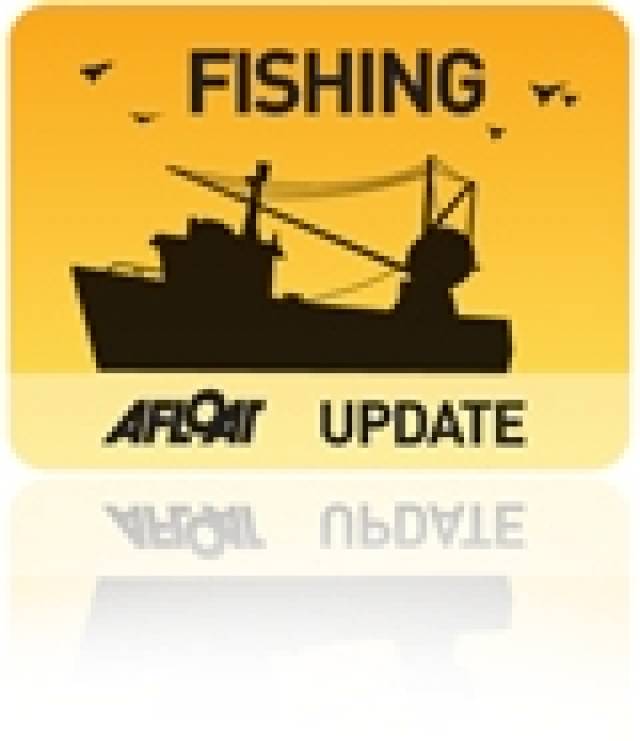#fishing – Simon Coveney T.D. Minister for Agriculture, Food and the Marine today welcomed the deal reached early this morning after two days and an overnight session of difficult and complex negotiations. Minister Coveney said "I am pleased that we have secured a good deal for Irish fishermen at the EU Fisheries Council that will support our fishing industry over the coming year and which is sustainable in terms of the fish stocks on which we are dependant."
During the negotiations 6,400 tonnes of whitefish quotas were secured over those proposed in the Commission proposal. At the end of the negotiations which set fish quotas for 2013, Minister Coveney was satisfied to have secured some 36,538 tonnes of whitefish and 180,000 of pelagic (mackerel, herring etc) quotas. The direct value of the total package for the Irish fishing fleet will be €213 million for 2013. The value to the overall Irish economy will be significantly higher when the added value in onshore processing is included.
The Hague Preferences were agreed in 1976 by the Heads of State. They guarantee Ireland minimum quantities of key stocks in our waters in exchange for granting access to other Member States to Ireland's rich fishing grounds. They also compensate for the cost of the heavy duty of control of these waters.
The quotas finally agreed by Council were very significantly increased from those originally proposed by the European Commission for the 2013 fishing year. Minister Coveney outlined the challenge facing him at this Council.
"Despite the difficult initial starting position, where I was facing large cuts in over 30 stocks of interest to Ireland, the result achieved is a good deal for the Irish fishing industry. We have secured increases from last year for key stocks including increased prawn quota in all areas totalling 8,733 tonnes and an increased whiting quota in the Celtic Sea amounting to 6,812 tonnes. The package of quotas secured today will support the economies of those coastal communities which are dependent on the resulting employment created both at sea and in onshore related industries."
Minister Coveney was speaking after two days of intensive negotiations, which concluded at 7am this morning. The Minister described the Council as "very challenging" and said that "My primary aim from the outset was to achieve an outcome that protected the overall interests of the Irish fishing industry while respecting the most up-to-date scientific advice for key stocks of critical importance to our fleets. I believe that I have achieved that aim. ".
The outcomes achieved for 2013 are as follows.
Irish Sea
The Minister successfully persuaded the Commission to reverse its original proposal for a significant cut in the Prawn Quota around the coast. Minster Coveney said "I explained that the original proposal did not take full account of the scientific advice and that a quota increase of 6% was fully justified and well within sustainable levels. I am delighted that common sense eventually prevailed and that a cut was averted." The prawn fishery is the most important for the whitefish fleet in particular for vessels in the Irish Sea with a landings value of € 50 million to the fishing fleet and further added value to the prawn processing industry. However, the Minister accepted cuts to cod and sole in the Irish Sea because of serious concerns about the state of these stocks.
Celtic sea
As part of the package negotiated by Minister Coveney, there will be a 29% increase for the Whiting quota in the Celtic Sea which will provide an additional 1,500 tonnes of whiting for the fishing fleets along the southern and western coasts. A modest increase in the Celtic Sea cod quota was secured and the important hake, megrim and monkfish quotas were maintained. The Minister accepted a modest reduction in the haddock stock in accordance with the scientific advice. Minister Coveney said "overall I am very satisfied that I have increased fishing opportunities for the whitefish fleet in the Celtic Sea".
North West
The main fisheries in the North West are those for our pelagic fleet fishing for herring, mackerel, blue whiting and boarfish. With regard to the latter, the Minister secured a rollover of the 56,666 tonnes quota in the developing boarfish fishery. The Minister supported a stock rebuilding plan for the herring fishery off Donegal which was developed by the local fishing industry supported by the Marine Institute. A 63 % increase in quota was secured in the blue whiting quota giving an Irish quota of 13,105 tonnes. The final quotas for mackerel, blue whiting and horse mackerel will only be finalised after the EU/ Norway Fisheries Agreement is completed early in the New Year, those quotas may increase further as a result. While we are facing reductions in our mackerel quota, we will receive significantly increased quotas for the important blue whiting stock, which is fished off the Donegal coast and processed in Killybegs.
An absolute priority for Ireland was the continued application of the Hague Preferences, which are of crucial political and economic importance for Ireland and were successfully protected.
In conclusion, Minister Coveney stated that a successful outcome had been achieved at this year's negotiations on behalf of Ireland. This agreement ensures the continued provision of significant fishing opportunities for our fishing industry and coastal communities while also ensuring the future sustainability of our fishing stocks.






























































